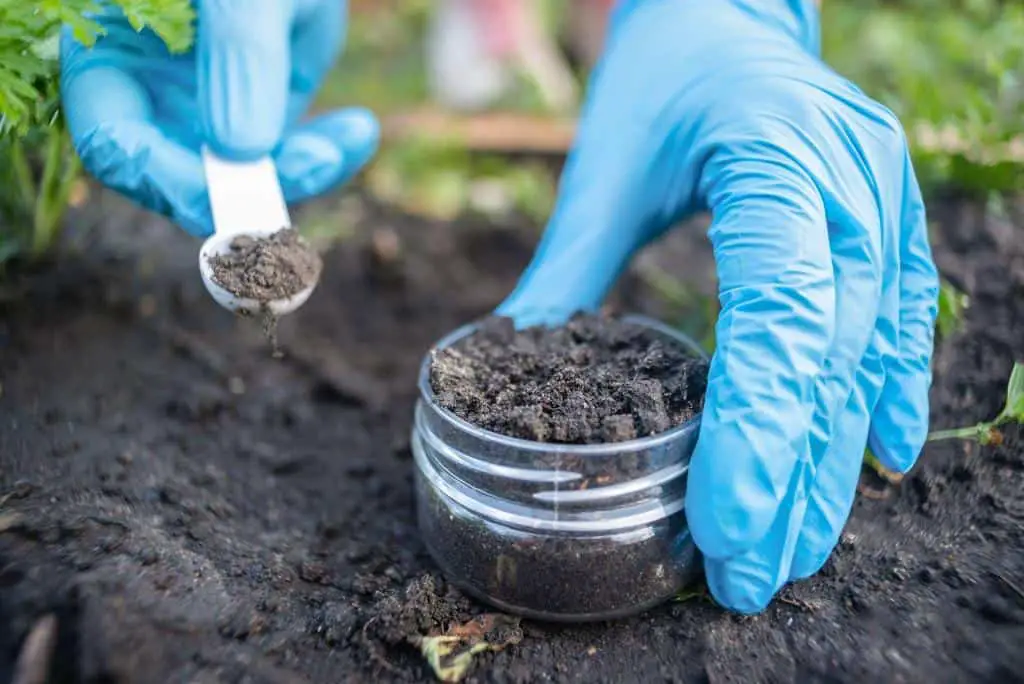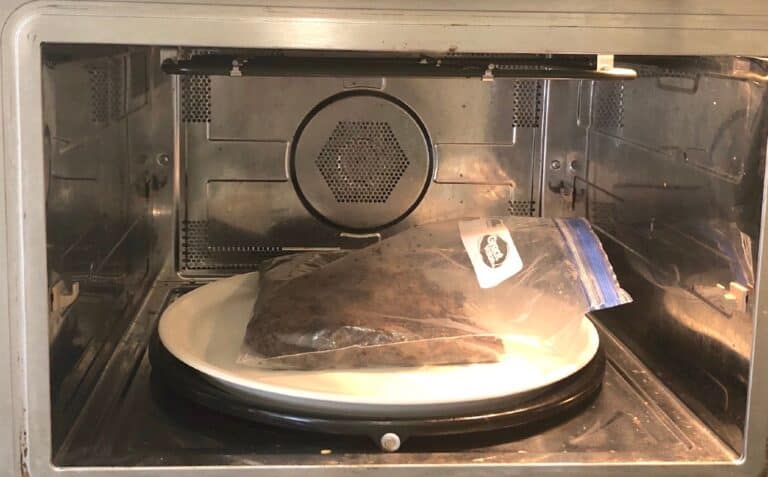How Can a Farmer Increase the Fertility of the Soil for Optimal Crop?

In the heart of every farmer lies a timeless quest: to coax the land into yielding bountiful harvests that sustain both body and soul. Yet, this age-old pursuit requires more than just the sweat of one’s brow; it demands an intimate understanding of the very foundation on which agriculture thrives—the soil.
Welcome to a journey of discovery—a voyage where the secrets of soil fertility unfurl before us like an intricate tapestry. Picture this: a farmer standing amidst verdant fields, gazing upon rows of thriving crops, their emerald hues dancing in the gentle breeze. But what hidden alchemy has brought forth such abundance? How can a farmer unlock the earth’s potential to yield crops of unparalleled quality and quantity?
In this article, we embark on an enlightening odyssey, delving into time-tested wisdom and cutting-edge techniques that empower farmers to elevate their soil’s fertility to new heights. From enriching organic matter to harnessing the magic of beneficial microbes, we unravel the very essence of nurturing a flourishing soil ecosystem.
So, fellow cultivators of the land, let us tread this fertile path together, as we unveil the secrets that will lead us to optimal crop yields and a future where the land and its stewards thrive in harmony.
Understanding Soil Fertility
Soil fertility is the foundation for successful agriculture, defining the soil’s inherent ability to support plant growth and productivity. Essentially, it determines how well crops can thrive in a particular field. Imagine soil fertility as a buffet of nutrients that plants need to grow big and strong. It’s like a plant’s vitamin stash! The more nutritious the soil, the healthier and more robust the crops will be.
The significance of soil fertility cannot be overstated. It directly influences the health and vigor of crops, making them better equipped to fend off pesky pests and diseases. Think of it as the plant’s immune system. When soil is fertile, crops are like superheroes, having the strength to resist various threats and produce abundant yields.
To achieve soil fertility, a balanced mix of key nutrients is necessary. These nutrients act like magic potions for the soil, providing the necessary fuel for plant growth. The essential nutrients include nitrogen, phosphorus, and potassium, often represented as NPK. In addition to these primary nutrients, the soil also requires micronutrients, such as iron, manganese, and zinc, which are equally important for healthy plant development.
However, achieving soil fertility isn’t a simple, one-size-fits-all equation. Several factors come into play, affecting the soil’s ability to provide the right nutrients to the plants. Climate plays a role, as different regions experience varying conditions that impact soil health. Soil type matters too; some soils naturally hold more nutrients than others.
The amount of organic matter in the soil also affects fertility, as it acts as a nutrient reservoir. Lastly, the way farmers manage their land, such as their choice of fertilizers and irrigation methods, can either boost or hinder soil fertility.
Other things like conducting soil tests, adjusting fertilizer use, and implementing sustainable practices can help ensure that the soil remains rich and fertile. Remember, happy soil equals happy plants!
Soil Testing and Analysis

When it comes to enhancing soil fertility, soil testing is the first step every farmer should take. Picture this: Before you plan a nutritious meal for yourself, you’d want to know what your body needs, right? Similarly, soil testing helps farmers understand what nutrients their soil lacks and what it needs to support healthy crop growth. It’s like a health checkup for the soil!
Now, there are several ways to conduct soil testing, and farmers can choose the method that best suits their needs. They can send soil samples to a laboratory for in-depth analysis, use on-site test kits for quick results, or even leverage digital soil mapping technology for a more comprehensive overview. It’s like having different options to check your soil’s pulse, all tailored to provide valuable insights.
Once the soil test results are in, interpreting them is key. Just like reading a treasure map, farmers can uncover the hidden gems of their soil’s health. By understanding which nutrients are deficient and in what quantities, farmers can create targeted solutions to meet their soil’s specific needs. It’s like crafting a personalized nutrition plan for your plants!
One crucial aspect highlighted in soil testing is the soil pH level. This value directly affects nutrient availability for the crops. Think of it as the soil’s acidity or alkalinity balance. Farmers must manage the soil’s pH to ensure that crops can easily take up the nutrients they require.
By maintaining the right pH, it’s like creating a harmonious environment for nutrients and plants to interact, resulting in better nutrient uptake and healthier, thriving crops. It’s the secret ingredient for a recipe of success!
What Are the Signs of Nutrient Deficiencies in Crops?
When something’s not quite right, our plants try to communicate with us in their own way. It’s like they’re sending out little SOS signals, and it’s up to us to decode them. So, let’s put on our detective hats and look out for these red flags:
- Stunted Growth: If you notice your crops aren’t growing as tall and strong as they should, it’s a sign that something might be lacking. It’s like their growth spurt got stuck in traffic!
- Yellowing or Discoloration of Leaves: Look out for those leaves turning yellow or showing unusual colors. It’s like their way of saying, “Hey, I need a bit more of something to keep me vibrant and healthy!”
- Poor Fruit Development: Oh, no, it’s like the fruits are feeling a bit under the weather too! If your crops’ fruits are small and underdeveloped, it’s a hint that they’re missing some essential nutrients.
- Overall Reduced Vigor: When your crops seem lackluster and just not as lively as they used to be, it’s time to pay attention. They might be feeling a bit drained and need a nutrient boost.
It’s important to remember that these signs can vary depending on which nutrient is deficient. Different nutrients play different roles in plant growth and development, so they’ll show their SOS signals in different ways. For instance, yellowing leaves might indicate a lack of nitrogen, while poor fruit development could be a sign of potassium deficiency.
How Can a Farmer Increase the Fertility of the Soil for Optimal Crops?
Increasing soil fertility is the holy grail for achieving bumper crops and a flourishing harvest. Lucky for you, there are some tried-and-true methods to achieve just that. So, let’s dive in and uncover the secrets to optimal soil fertility!
1. Composting: Nature’s Black Gold
One of the most time-tested and reliable methods for enhancing soil fertility is composting. Often referred to as “nature’s black gold,” compost is a rich, dark, crumbly substance that forms when organic matter decomposes.
By collecting kitchen scraps, yard waste, and animal manure, farmers can create their own compost piles or bins. As the organic materials break down, they release valuable nutrients back into the soil, including nitrogen, phosphorus, and potassium. Additionally, compost improves the soil’s structure, enabling it to retain moisture and resist erosion.
Benefits of Composting:
- Enriches soil with essential nutrients
- Improves soil structure and water retention
- Encourages beneficial microbial activity
- Reduces the need for synthetic fertilizers
- Environmentally friendly and cost-effective
2. Crop Rotation: A Natural Balancing Act
Another brilliant technique to enhance soil fertility is crop rotation. Monocropping, where the same crop is cultivated in the same field year after year, can deplete specific nutrients from the soil and leave it vulnerable to pests and diseases.
Crop rotation involves the deliberate sequence of different crops in a particular area over several seasons. Each crop has unique nutrient requirements and interacts differently with the soil. By rotating crops, farmers can maintain a more balanced nutrient profile in the soil and break the life cycles of pests, reducing the need for chemical pesticides.
Crop Rotation Tips:
- Include legumes (such as beans and peas) to fix nitrogen in the soil
- Follow heavy feeders (like corn) with light feeders (like leafy greens)
- Avoid planting crops from the same family successively
3. Cover Crops: Nature’s Blanket
Cover crops, also known as green manure, act as a natural blanket for the soil. These are quick-growing crops planted between regular crop cycles or during fallow periods. The root systems of cover crops aid in improving soil structure and preventing wind and rain-related erosion. Once these crops reach maturity, they can be tilled back into the soil, adding organic matter and nutrients. Legume cover crops, in particular, fix nitrogen from the air into the soil, contributing to its overall fertility.
Popular Cover Crops:
- Winter Rye: Controls weeds and scavenges nutrients
- Clover: Fixes nitrogen and adds organic matter
- Mustard: Suppresses pests and diseases
4. Mulching: Nature’s Protective Layer
Mulching is like providing a protective shield for the soil and crops. It involves covering the soil surface with a layer of organic or inorganic material, such as straw, wood chips, or plastic film.
Mulch helps retain soil moisture and moderates soil temperature. Mulching also prevents weed growth. As the mulch decomposes, it adds nutrients to the soil, enhancing its fertility. Organic mulches also attract beneficial organisms that further enrich the soil.
Types of Mulch:
- Straw: Ideal for vegetable gardens and strawberries
- Wood Chips: Suitable for orchards and perennial beds
- Plastic Film: Commonly used for large-scale agriculture
5. Vermicomposting: Worms to the Rescue
Vermicomposting is a specialized form of composting that involves the use of earthworms to accelerate the decomposition process. These diligent creatures consume organic matter and break it down into nutrient-rich castings, also known as worm humus.
Vermicompost is incredibly potent and packed with essential nutrients that plants readily absorb. Additionally, worm activity helps aerate the soil, allowing for better root penetration and improved nutrient uptake.
Benefits of Vermicomposting:
- Fast and efficient decomposition
- High-quality, nutrient-dense compost
- Enhanced soil aeration and drainage
- Ideal for indoor and small-scale composting
6. Adding Organic Amendments: Nutrient Boosters
For targeted nutrient enrichment, farmers can incorporate organic amendments into the soil. Organic amendments include materials like bone meal, fish emulsion, and kelp meal, which are excellent sources of nitrogen, phosphorus, and potassium.
These amendments release nutrients slowly, providing a steady supply to the plants over time. It’s essential to analyze the soil’s nutrient content before adding amendments to ensure a balanced and sustainable approach.
Common Organic Amendments:
| Amendment | Nutrient Content | Best Suited For |
| Bone Meal | High in Phosphorus | Flowering Plants |
| Fish Emulsion | Balanced N-P-K Ratio | All-Purpose |
| Kelp Meal | Rich in Micronutrients | Overall Soil Health |
7. Avoiding Over-Tilling: A Delicate Balance
While tilling can be necessary for soil preparation, excessive or improper tilling can harm the soil structure and reduce fertility. Over-tilling disrupts the soil’s natural ecosystem, destroying beneficial organisms and essential organic matter. It can also lead to increased erosion and nutrient leaching.
Farmers should adopt minimum tillage or no-till practices whenever possible, especially in combination with mulching and cover cropping.
Benefits of Reduced Tillage:
- Preserves soil structure and microbial activity
- Reduces erosion and water runoff
- Conserves energy and lowers production costs
8. Implementing Agroforestry: Trees as Allies
Agroforestry is a sustainable land management practice that involves integrating trees with crops or livestock. Trees play a crucial role in enhancing soil fertility. Their leaves provide natural mulch, and when they shed, they contribute organic matter to the soil.
Additionally, the presence of trees can create a microclimate that benefits crops, protects against wind erosion, and encourages biodiversity. Agroforestry systems can also include nitrogen-fixing tree species to further improve soil quality.
Types of Agroforestry Systems:
- Alley Cropping: Crops grown between rows of trees
- Silvopasture: Trees integrated into grazing areas
- Windbreaks: Rows of trees planted as barriers against wind
9. Sustainable Water Management
Water, oh sweet water, It’s the elixir of life for our soil and crops! When it comes to sustainable water management, we need to be like master chefs, carefully measuring and delivering just the right amount. You see, water is like the conductor of a symphony, influencing nutrient availability and the health of our plant roots. Get it wrong, and it can wreak havoc on soil fertility.
Proper drainage systems help prevent waterlogging, making sure our plants don’t drown their roots. On the flip side, adding organic matter to our soils is like giving them a sponge! It enhances water-holding capacity, which is a godsend for those drought-prone soils. With this moisture reservoir, our crops can keep cool even during dry spells.
So, there you have it—the recipe for sustainable water management. By adopting these practices, we can preserve our water resources, maintain soil fertility, and ensure our crops grow strong and healthy. It’s like nurturing a thriving ecosystem that benefits everyone involved – from farmers to plants, and even Mother Nature herself!
Conclusion
In conclusion, soil fertility is the cornerstone of successful agriculture, and it is imperative for farmers to employ sustainable practices to maintain and enhance soil health. By adopting composting, crop rotation, cover cropping, mulching, vermicomposting, and organic amendments, farmers can naturally enrich the soil with essential nutrients and improve its structure. Furthermore, avoiding over-tilling and implementing agroforestry can foster a balanced and resilient ecosystem that benefits both crops and the environment.
Remember, the goal is not just immediate high yields, but also the long-term well-being of the soil and the crops it sustains. Sustainable soil management practices not only lead to optimal crop production but also contribute to a healthier planet for future generations of farmers and
FAQs on Increasing Soil Fertility for Optimal Crops
What are the natural ways to increase soil fertility?
Natural ways to increase soil fertility include incorporating organic matter like compost and manure, practicing cover cropping to prevent erosion and add nutrients, using crop residues as mulch, and promoting beneficial microbial activity through reduced tillage.
Can crop rotation alone improve soil fertility?
While crop rotation is beneficial for managing pests and diseases, it alone cannot significantly improve soil fertility. Implementing other practices like cover cropping, organic matter addition, and balanced nutrient management is essential for long-term soil health.
How often should I conduct soil testing for my farm?
For most farms, conducting soil testing every 2 to 3 years is recommended. However, on highly managed or large-scale farms, yearly testing may be necessary to ensure optimal nutrient levels and pH balance.
Are chemical fertilizers harmful to the soil in the long run?
Prolonged and excessive use of chemical fertilizers can lead to soil degradation, including reduced microbial activity, nutrient imbalances, and increased soil acidity. It is crucial to complement their use with organic practices to maintain soil health.
How can I prevent nutrient leaching from my fields?
To prevent nutrient leaching, farmers can use practices like applying fertilizers at the right time and rate, using slow-release formulations, and incorporating organic matter to improve nutrient retention in the soil.
Is it possible to restore severely degraded soil for agricultural use?
Yes, severely degraded soil can be restored for agricultural use through techniques like soil amendment with organic matter, cover cropping, agroforestry, and appropriate water management. However, it may require significant effort and time to rejuvenate the soil to a productive state.







